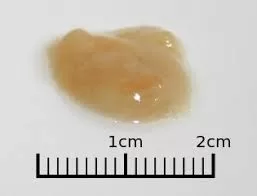
Recent research presented at the European Respiratory Society International Congress in Milan, Italy, indicates that the color of phlegm in individuals with bronchiectasis, a lung condition, may serve as an indicator of lung inflammation and be predictive of their future outcomes.
This study, which involved nearly 20,000 patients from 31 countries, marks the first instance where the color of phlegm (also known as sputum) has demonstrated clinically relevant information regarding prognoses. As a result, it can assist in making informed decisions about treatment. Bronchiectasis is a chronic, incurable condition characterized by the widening of one or more bronchi, leading to an accumulation of excess mucus that makes the lungs more susceptible to infections. Over time, this can lead to progressive lung damage. Causes may include lung infections like pneumonia or whooping cough, cystic fibrosis, underlying immune system issues, or aspergillosis—an allergy to specific fungi that inflame the bronchi when their spores are inhaled. Bronchiectasis is among the three most common chronic inflammatory airway diseases (alongside asthma and COPD), affecting between 67 to 566 individuals per 100,000 in Europe, North America, the UK, and the USA, and it can affect people of any age, though symptoms typically arise in middle age.
Dr. Megan Crichton, a postdoctoral researcher at the University of Dundee, UK, who presented the research, stated: “One of the main characteristics of bronchiectasis is a productive cough, with almost three quarters of bronchiectasis patients producing sputum daily. When patients develop chest infections, their sputum color darkens, and this color change is due to a protein called myeloperoxidase or MPO, which is released from the inflamed cells; hence sputum color can be used as a biomarker for inflammation. We know that the level of lung inflammation is important for long term health in bronchiectasis, so we wanted to know whether the sputum color, when assessed when the patient is healthy with no chest infection, had any relationship to long-term outcomes such as lung function and frequency and severity of exacerbations.”
Dr. Crichton and her colleagues recorded the sputum color in 13,484 out of 19,324 patients who regularly expectorated sputum and were enrolled in the pan-European bronchiectasis registry, EMBARC. They followed the patients for up to five years to examine the number of exacerbations, their severity, and mortality rates. Sputum is categorized into four levels: mucoid (clear, frothy, and grey), mucopurulent (creamy yellow), purulent (darker yellow or green with thicker texture), and severe purulent (darkest green turning into brown, occasionally with streaks of blood). Among the sputum-producing patients, 40% had mucoid, 40% had mucopurulent, 18% had purulent, and 1% had severe purulent sputum.
Dr. Crichton noted: “We found an increased risk of exacerbations, hospitalizations, and death with more purulent sputum. For each 1-point increase in sputum purulence, there was a 12% increased risk of death.” She continued: “As this is a large study conducted across multiple countries and with five years of follow-up data, it provides the evidence that sputum color reflects prognosis. Sputum samples can be easily collected from most patients, and the color has shown to be a useful indicator, thereby making sputum a readily available and easy-to-interpret clinical biomarker for disease progression. We believe that implementation of this biomarker into clinical practice will improve treatment and monitoring of bronchiectasis patients. Sputum sampling is non-invasive for patients, and they are actively encouraged to cough up sputum whenever possible to improve their lung function. Knowing that by looking at their sputum color as a means of self-monitoring and self-management can empower patients and gives them some control over their condition, which we know is important for improving patient quality of life.”
The researchers are exploring the introduction of the sputum color chart into clinical practice and the best way to assist patients in using it to monitor their own disease severity. They plan to share these additional findings to raise awareness among patients, clinicians, and researchers.
Professor Carlos Robalo Cordeiro, President of the European Respiratory Society and Head of the Pneumology Department at Coimbra University Hospital, Portugal, who was not involved in the research, commented: “The findings from this study offer doctors and patients an easy, non-invasive way of monitoring their symptoms. If this is rolled out into clinical practice, it could make a real difference to managing this disease, and allow clinicians to intervene at an earlier stage if it becomes clear from the change in sputum color that patients’ symptoms are worsening.”











